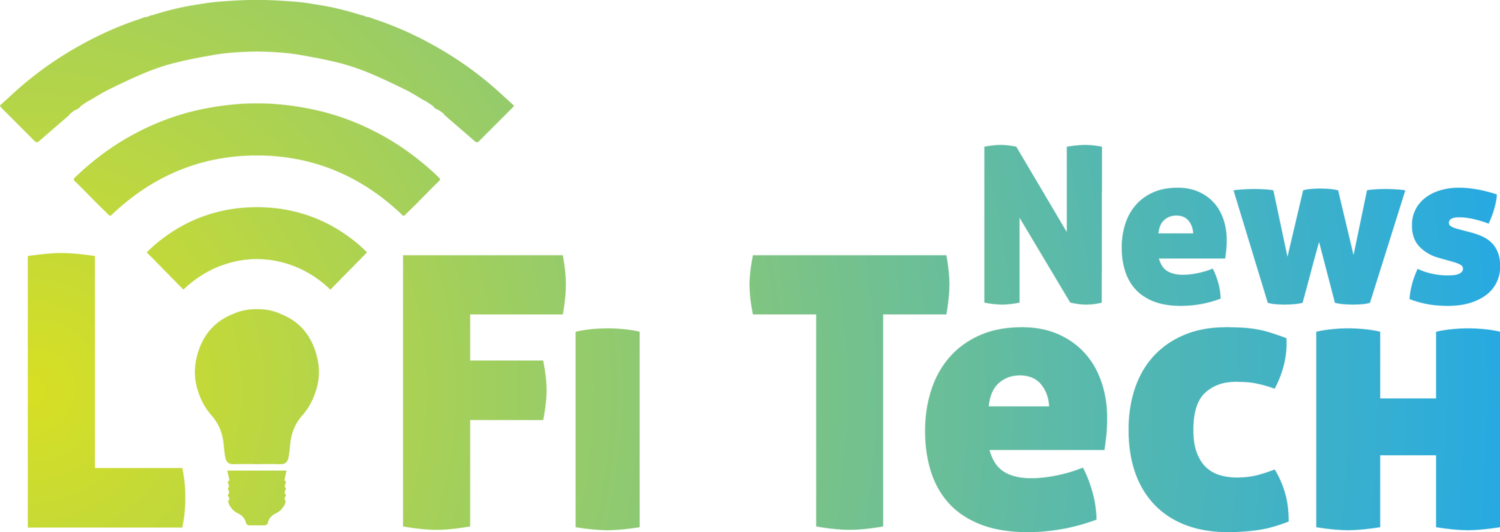OLEDCOMM Announced The Integration of Their LiFi Module, SatelLife®, Into The LATMOS Laboratoire Atmosphères, Observations Spatiales INSPIRE-SAT 7 Nanosatellite, Set to launch on April 9, 2023, with SpaceX
SatelLife®
On Monday 03rd April 2023, Oledcomm announced the integration of their LiFi module, SatelLife®, into a satellite. SatelLife® has been integrated into the LATMOS Laboratoire Atmosphères, Observations Spatiales INSPIRE-SAT 7 nanosatellite, set to launch on April 9, 2023, with SpaceX from California.
Oledcomm states that LiFi offers key benefits for space missions such as an ultra-secure and interference-free wireless connection, and significant weight savings by eliminating radiation-resistant space-grade cables and connectors, at extremely low energy consumption.
It is also beneficial in many space applications such as the replacement of intra-satellite payload-computer cables, the replacement of intra-satellite bus data cables, the replacement of inter-stage cables on launchers, and much more.
INSPIRE-SAT 7 is a French 2-Unit CubeSat (11.5 × 11.5 × 22.7 cm) primarily designed for Earth and Sun observation. INSPIRE-SAT 7 is one of the missions of the International Satellite Program in Research and Education (INSPIRE).
Below are some of the statements by benjamin Azoulay, president of Oledcomm:
“Let me first remind you what LiFi is. It is a communication that uses light. We use LEDs that we flash at a very high speed, 30 million times per second to send information and receive it. It's like Wi-Fi.”
“But LiFi is not intended to replace Wi-Fi. LiFi has the vocation to replace cable everywhere radio frequencies are forbidden. So, inside a satellite, radio frequencies are prohibited because they will interfere with onboard equipment. So, here we have a solution that allows us to replace cables, to lighten the satellites. And of course, as when you know that each kilo to put into orbit costs about 50 kilos of kerosene. You can see the advantage of technology right away.”
“So, it's that security is very important, it's a huge constraint. Wi-Fi is strictly prohibited in many military applications and in those environments, you have the Edge in an Army command centre for example, there is. There can be up to 30 kilometres of cable to see all the PCs wired and listen to us. We bring this wireless advantage to these environments.”
“So, we've been contacted by companies that work on lunar stations and want to take LiFi to replace cables, either inside the station or just nearby outside the station to avoid having extremely heavy shielded cables. You know that in space, there is a lot of radiation that attacks all the electronic materials, including the cables, so the cables are shielded. It's very heavy, it's very big. Look, this is the application we have. And so the satellite is called Inspired Seven. It is a ring of the University of Paris-Saclay and the laboratory. Lévesque's atmosphere and space observation, a world first. We also worked with Space X.”
“We're working on a fairly major transportation project line in a large French region. I can't say more today.”
“And so just to finish up, we're in the process of preparing a fundraising of about 10 million euros. The European Union is going to take a stake in the company, and has already expressed an intention to take a third of this round to finance our development in the United States and our development in the US.”
Oledcomm
Oledcomm designs and develops LiFi network interface devices that enable high-speed wireless data communication. It also serves LiFi equipment in the telecom, datacom, personal electronics, and industrial markets. The company’s product portfolio includes hubs, routers, switches, adapters, drivers, power supplies, and more.
Oledcomm was founded in 2012 and is based in Paris, France. Oledcomm's adventure began in 2005 in the research laboratories of the University of Versailles-Saint-Quentin with the first work on communication by visible light.
Following years of research & development and a passion for innovation, Oledcomm became the pioneer of LiFi (Light Fidelity) solutions and innovation on a global scale.
Based in the Paris region, Oledcomm employs around 20 people and designs complete solutions for LiFi operation, including microcontrollers, LiFi photoreceivers and software platforms.
Today, after more than 33 patents, 15 years of R&D, over 500 trusted clients and several awards, Oledcomm is pursuing a strong mission: to transform the 14 billion points of light in the world into a powerful communication network.
The company is ISO 9001:2015 and ISO 14001:2015 certified. Oledcomm's LiFi offering solves connectivity problems by replacing cables in environments where radio waves are undesirable. Targeted sectors include space, defence, industrial and education. Since 2020, LiFiMAX® has been installed and tested in more than 800 projects worldwide and has been validated by ORANGE for Cybersecurity.
At the Mobile World Congress in Barcelona in 2021, Oledcomm announced an integrated circuit (ASIC) that enables native LiFi integration in tablets, PCs or smartphones. Oledcomm is a laureate of the European Deeptech EIC Accelerator program, which provides for the European Commission to invest in Oledcomm through the EIC Fund.
What is LiFi?
LiFi, also known as "Light Fidelity" is a wireless optical networking technology, which uses light-emitting diodes (LEDs) to transmit data. In 2011, professor Harald Haas made a LiFi demonstration at the TED (Technology, Entertainment, Design) Global Talk on Visible Light Communication (VLC).
VLC uses light as a medium to deliver high-speed communication like Wi-Fi and complies with the IEEE standard IEEE 802.15.7. The IEEE 802.15.7 is a high-speed, bidirectional, and fully networked wireless communication technology-based standard similar to Wi-Fi's IEEE 802.11.
How does LiFi work?
LiFi is a high speed, bidirectional, and fully networked wireless communication of data using light. LiFi constitutes of several light bulbs that form a wireless network.
When an electrical current goes through to a LED light bulb, a stream of light (photons) emits from the lamp. LED bulbs are semiconductor devices, which means that the brightness of the light flowing through them can change at extremely high speeds. The signal is sent by modulating the light at different rates. The signal can then be received by a detector that interprets the changes in light intensity (the signal) as data. Also when the LED is ON, you transmit a digital 1, and when it is OFF, you transmit a 0.
LiFi Benefits
The primary benefits of LiFi are as follows:
• Security: Provides entirely secure access. Where there is no light there is no data.
• Safety: Does not produce electromagnetic radiation and does not interfere with existing electronic systems.
• Localisation: Allows localisation due to the small coverage area of LiFi access point - localisation can be used for very precise asset tracking.
• Data density: Provides ubiquitous high-speed wireless access that offers substantially greater data density (data rate per unit area) than RF through high bandwidth reuse.
Credit to Oledcomm
LiFi Applications
LiFi can be used for so many applications and the list is increasing every year. You can read our updated list of Li-Fi applications at the following link:
Credit to pureLiFi
LiFi Systems Reviews by LiFi Tech News
OLEDCOMM LIFIMAX KIT REVIEW - ONE YEAR IN
We reviewed the LiFiMax kit produced by the leading French LiFi company Oledcomm. We bought this LiFi kit system at the end of 2020. After over a year of use, we decided to write a review of this LiFi system. We looked briefly at the profile of Oledcomm, a brief history of the LiFiMax system, the Kit box contents, some testing and performance results of this LiFi system, the customer experience and our own verdict (the good and the bad points) of the LiFiMax kit.
You can read the review on this link:
https://www.lifitn.com/blog/lifimaxreview
SIGNIFY TRULIFI 6002.1 STARTER KIT SYSTEM REVIEW
We also reviewed the Trulifi 6002.1 starter kit produced by Signify, the world leader in lighting for professionals, consumers and lighting for the Internet of Things. We got this LiFi kit system with the help of PCDSI and Signify around August 2021. In a similar fashion done with our previous review of the LiFiMax kit a few months ago, we will look briefly at the profile of Signify, a brief history of the Trulifi 6002.1 kit, the Kit box contents, some testing and performance results of this LiFi system, the customer experience and our own verdict (the good points and the bad points) of the Trulifi 6002.1 kit.
You can read the review on this link:
https://www.lifitn.com/blog/trulifi6002review
In conclusion, if you are also interested to hear more information about the OWNII Coin or enquire about LiFi devices such as the LiFiMax and Trulifi, you can contact us through our chatbot or by sending an email through our contact us form. If you enjoyed this post and would like to hear more updates about LiFi technology, subscribe to our newsletter. Don’t forget to subscribe to our social media accounts. You can also join our Telegram group about LiFi technology on this link:
https://t.me/joinchat/FMzOmsEKyJFrU6Af






